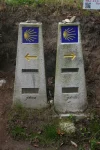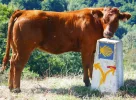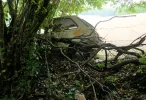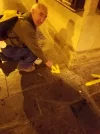It seems hard to find a definite answer on why the arrows are yellow.
According to the article posted in post #2, Elias Velina chose yellow (amongst other reasons) because yellow is typically used in Galicia for signposting hiking trails.
According to a family member, however, he chose yellow because - when in France - he saw that yellow was used to signpost mountain routes in France.
I do not know which explanation makes more sense - as I do not know in which colour trails are typically signposted in either Galicia or France.
Legend has it that the priest started painting yellow arrows seizing the opportunity using leftover paint used for signposting roads which had been given to him by some workers who worked in the area. For José Manuel López Valiña, a descendant of the parish priest of and resident of this village, the choice of this colour was by no means entirely by chance. “In the first outings to explore the terrain and signpost the Route, my uncle realised that it was necessary to use something for attracting a lot of attention and which would last for a lifetime. When he arrived in France he saw that yellow was the colour used to signpost mountain routes, so he decided to paint the Camino de Santiago (St. James's Way) route in that colour ”, he states.
The yellow arrow, established by the parish priest Elías Valiña in the 70s, becomes the only valid sign to mark the direction of the Camino

www.elcaminoconcorreos.com

























